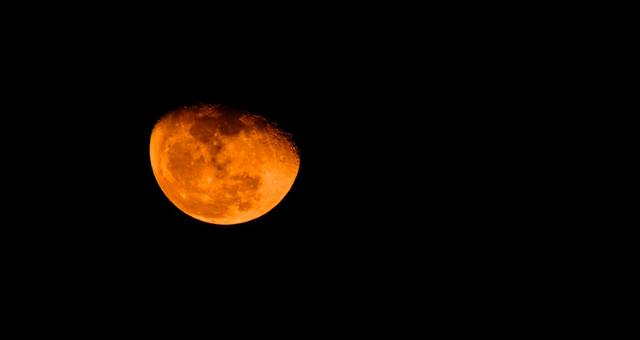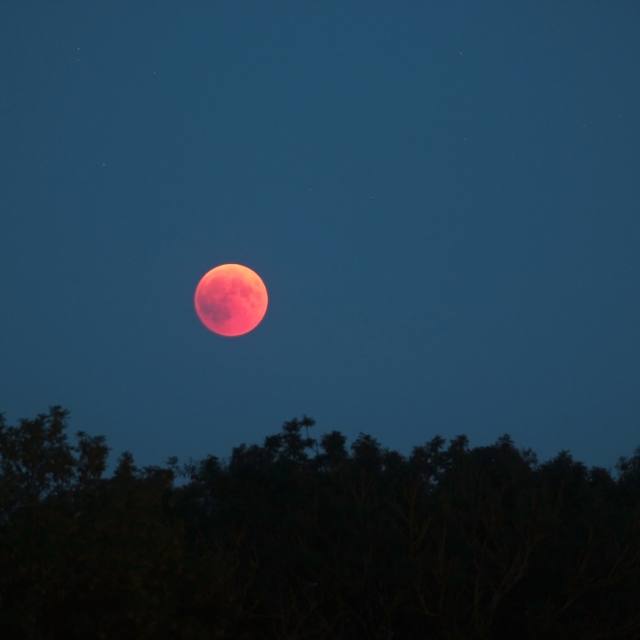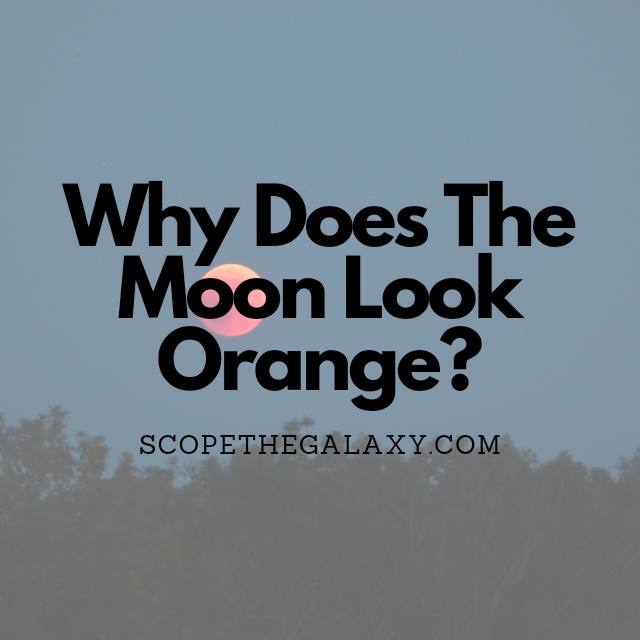*This post may contain affiliate links. This means we may make a commission if you purchase an item using one of our links*
When we look into the night sky, we see a white moon, maybe yellow, and sometimes blue. But have you ever seen an orange moon? While a “blood moon” can appear as an orange hue, there are other reasons why you might spot this unusual-colored celestial body in the night sky.
Continue reading to discover what an “orange” moon is, how it differs from a blood moon, and whether or not a lunar eclipse causes this phenomenon.
What Is An Orange Moon?
Table of Contents

We can use the phrase “orange moon” to describe our celestial satellite in a number of different scenarios. The moon most often appears as a glowing white or yellow, but during sunrise and sunset, we can see a variance in this color.
The reason is that when light passes through Earth, its wavelengths are scattered by our atmosphere. We filter blue and green light while red, orange, and yellow colors escape. Still, the “light” from the moon is created by rays directly reflected from the Sun. These rays do not pass through Earth’s atmosphere, which is why we often view the moon as bright white.
Still, during sunrise and sunset, things are a little bit different. During this time, we also see the Sun change color as it broaches our horizon, and the light filters in another way. The moon doesn’t change color, but it reflects this changing light of the Sun, thus creating an optical illusion.
The moon’s color does not change; instead, our perception of its color is based on Earth’s filters.
If we look at our moon with as few filters as possible, we can see that its “true” color is actually varying shades of grey. The only variances in this color come from our own filters here on Earth.
How Often Will The Moon Turn Orange?
Orange moons can occur pretty frequently, depending on which type of moon you are talking about.
In simple terms, we see an orange moon any time the Earth’s atmosphere filters out shorter wavelengths of light, leaving only red, orange, and yellow hues behind. Several factors can cause this phenomenon, including the moon’s position in the sky, dust and other particles in the air, or pollution such as smoke from wildfires.
A harvest moon can also cause the moon to appear orange, though these only occur roughly once every three years, usually in October. This refers to a period when the moon rises earlier and sets later than usual. And this irregular positioning can see it glow with a bright orange hue.
As we’ve learned, the Earth acts as a filter for the Sun’s light, and during the autumnal equinox, the two celestial bodies are positioned correctly for our filters to create an orange moon. The moon can also turn orange during a lunar eclipse, but this phenomenon is often called a “blood moon,” as it can appear rusty, red, or brown.
Is An Orange Moon A Lunar Eclipse?

A total lunar eclipse is what we commonly refer to as a “blood moon.” When this happens, the Earth passes between the Sun and the Moon casting a shadow over our natural satellite. Still, this “shadow” doesn’t take effect immediately, and if you observe the moon over time, you will see it change from a bright white to an orange-red hue.
This happens because the Earth blocks some of the Sun’s rays, but others still manage to bend around the outside. Our atmosphere tends to scatter the blue and green wavelengths, but red and orange colors still make it through to us. This is a similar phenomenon to witnessing a sunset.
The last “total lunar eclipse” was the “beaver blood moon,” created on Nov 8th, 2022. A total eclipse thrilled spectators in North America and some areas of South America, Australia, New Zealand, and Asia. Still, this impressive phenomenon will only occur again on the 13th or 14th of March 2025.
The depth of the red coloration depends on your viewing spot, with cloud color, debris, and pollution affecting the moon’s appearance. Say a volcanic eruption had just occurred; in that case, the moon would appear darker than usual.
And this phenomenon is only possible because of the perfect distance between the Sun, the moon, and the Earth, which makes the former two appear the same size in our sky. In truth, the Sun is around 400 times larger than the moon, and once our paths deviate from this perfect alignment, we will no longer experience blood moons.
Conclusion
There are several reasons our moon can appear orange; its position in the sky, its alignment with the Sun and the Earth, or the pollution in our atmosphere. Still, all these phenomena are optical illusions caused by our perceptions of Earth. The moon, in reality, is just varying shades of gray.
Simply put, the moon sometimes looks orange because the Earth is a filter. At different times and positions, this filter can create just the right wavelengths for the moon to appear orange.
References
What is a Blood Moon? | Space
Orange Moon | Types of Moon Colors | Study.com
What Makes the Moon Look Orange? | Wonderopolis
ORANGE MOON: Here’s why last night’s “Harvest Moon” appeared orange over Arkansas | KARK

